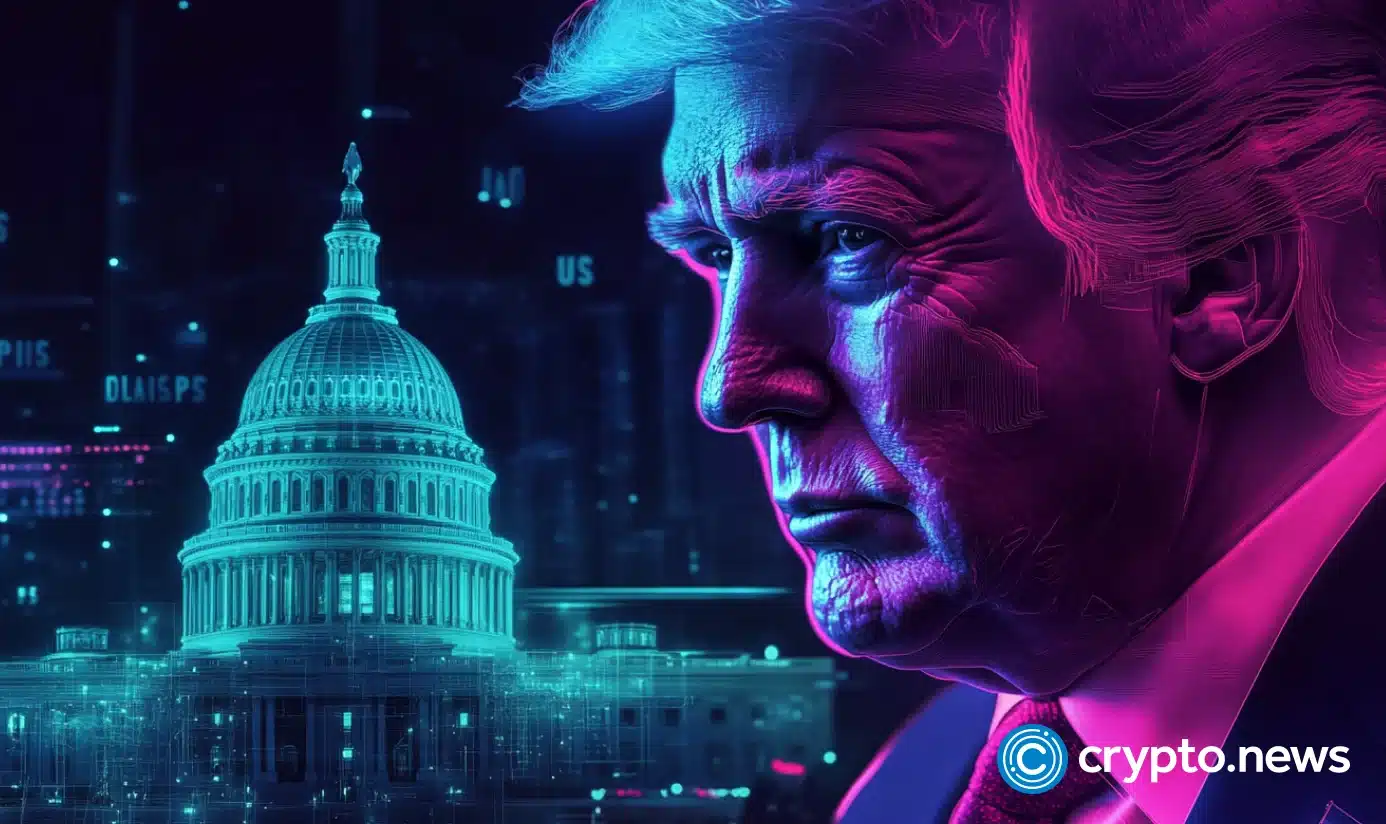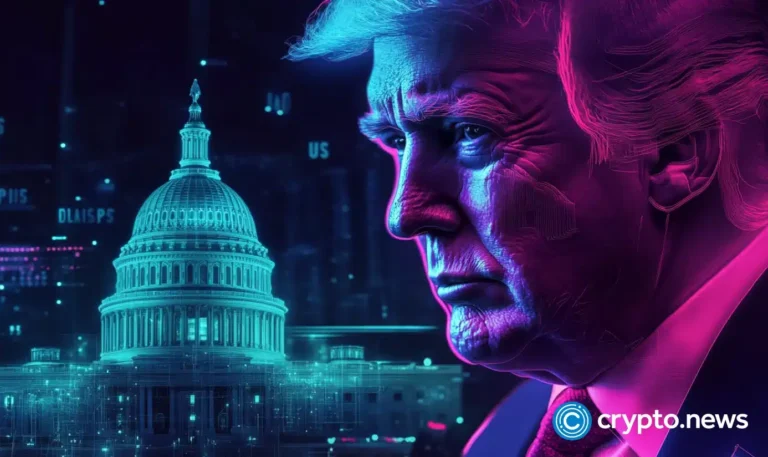
Mass liquidations, a crypto crash, and panic everywhere — but a top analyst says this could be crypto’s biggest opportunity yet. Could U.S. President Donald Trump’s tariffs actually fuel Bitcoin’s next big move?
Editor’s note: this article was written prior to the U.S. government reaching a tentative deal with Mexico’s government to at the very least suspend implementation of the tariff for one month. You can read about this development here.
Crypto markets have taken a sharp downturn following the latest wave of economic uncertainty triggered by new U.S. tariffs.
Effective Feb. 1, the U.S. imposed 25% tariffs on imports from Canada and Mexico and 10% tariffs on Chinese goods, escalating trade tensions and adding pressure to global markets.
In the wake of this situation, Bitcoin (BTC) dropped to $91,200 before recovering to $96,000 levels, still down 2.5% in the last 24-hours as of Feb. 3. Meanwhile, Ethereum (ETH) saw a 15% drop, crashing to $2,600.
The overall crypto market followed suit, losing $300 billion in value in just 24 hours, bringing total market cap down to $3.25 trillion, its lowest since mid-November, according to CoinGecko.
The derivatives market faced heavy liquidations, with $2.33 billion in positions wiped out, as per CoinGlass. Long traders suffered the most, losing $1.91 billion, while short positions saw $417 million in liquidations. Ethereum led the losses with $600 million liquidated, followed by Bitcoin at $400 million.
Tariffs can drive inflation, disrupt supply chains, and weaken economic growth—factors that influence market sentiment. The key question now is how deep this correction could go and whether the market is bracing for prolonged volatility. Let’s find out.
Tariffs as a strategic lever
The ongoing shifts in U.S. economic strategy, particularly regarding tariffs, extend beyond trade policy and function as part of a broader monetary approach.
According to Jeff Park, Head of Alpha Strategies at Bitwise, this strategy connects to the Triffin dilemma—an issue tied to the U.S. dollar’s role as the world’s reserve currency.
“The U.S. wants to keep borrowing cheaply, but at the same time, it needs to weaken the dollar and rebalance trade deficits. That’s the paradox, and tariffs are being positioned as an indirect tool to force movement in that direction.”
Since global trade relies on the dollar, foreign governments and central banks must hold large reserves of it. This dynamic keeps the dollar structurally overvalued, making U.S. exports less competitive while allowing the government to borrow on favorable terms.
To maintain this system, the U.S. has historically run persistent trade deficits, effectively supplying the world with dollars at the expense of its industrial base.
Now, however, Park notes that the U.S. is looking for ways to counter the negative effects of an overvalued dollar without giving up its borrowing advantage. Tariffs are being used in this context—not as a conventional protectionist measure but as a tool to influence foreign governments’ dollar reserves and U.S. Treasury holdings.
“If successful, tariffs could set the stage for a modern version of the 1985 Plaza Accord,” Park says. “But instead of direct negotiations, the U.S. is applying asymmetric economic pressure.”
The goal is to encourage trade partners to shift from short-term Treasury holdings to longer-duration debt, which could help stabilize the U.S. debt market while facilitating a controlled depreciation of the dollar.
However, this strategy carries risks. Tariffs increase costs, which can contribute to inflation and prompt central banks to adjust policy in ways that could create instability in financial markets, including crypto.
If inflation rises too quickly, the Federal Reserve and other central banks may respond with measures that heighten volatility across risk assets.
“People assume tariffs are just about trade,” Park adds. “But if you step back, they’re part of a broader monetary strategy—one that, if executed correctly, could reshape the entire global financial balance.”
Bitcoin’s role in an era of monetary realignment
If the U.S. weakens the dollar while maintaining low borrowing costs, financial conditions could become more favorable for risk assets like Bitcoin. Park explains:
“Trump’s primary goal is to lower the 10-year Treasury yield, and the reason is simple—his financial interests depend on it, particularly in real estate. His push for Powell to cut short-term rates, and then realizing it wasn’t working, was the catalyst. Never underestimate the straightforward incentives of someone transparently driven by profit—aligning with them can be strategic.”
Initially, the administration pressured the Federal Reserve to cut rates. When that approach did not yield the desired outcome, tariffs became the next tool.
As tariffs increase costs and slow economic growth in major trade-dependent economies, foreign governments are likely to respond with monetary easing and fiscal stimulus, which could weaken their currencies relative to the dollar. This, in turn, would export inflation back to the U.S. while increasing global liquidity.
Historically, investors seeking protection against inflation and currency debasement have turned to gold, government bonds, and real estate.
Today, Bitcoin presents an additional option—a liquid, decentralized store of value that operates outside government control. Park believes both U.S. and foreign investors will turn to Bitcoin, though for different reasons.
“In the U.S., Bitcoin may act as a hedge against dollar weakness and inflation, while in foreign markets, it could provide an escape from local currency devaluation,” Park says.
“Mark my words: the 10-year yield is going to drop—whatever it takes,” Park states. “In a world with a weaker dollar and lower U.S. interest rates, risk assets in the U.S. could rise beyond expectations. The asset to own, therefore, is Bitcoin.”
If Park’s assessment holds, the very factors that initially contributed to Bitcoin’s decline—tariffs, monetary uncertainty, and inflation concerns—could eventually play a role in driving its next wave of adoption.
Expert perspectives: How tariffs could reshape the crypto market
To understand the broader implications of U.S. tariffs on crypto, crypto.News reached out to industry experts who offered a range of insights on market reactions, structural shifts, and the evolving role of Bitcoin.
While some see the sell-off as a temporary reaction, others argue it signals deeper economic changes that could reshape crypto’s role in global finance.
Panic selling or fundamental shift?
Kevin He, Co-founder of Bitlayer Labs, believes the recent market drop is primarily an overreaction but warns that its long-term impact depends on broader economic conditions.
“In the short term, this looks like an overreaction by the market. But in the long run, the impact will depend on how the crypto market interacts with the global economic environment.”
He pointed out that if trade tensions escalate into a recession, institutions may cut exposure to high-risk assets like crypto, but Bitcoin could also attract more safe-haven demand.
“If the trade war triggers a global recession, institutions may reduce exposure to crypto and tech stocks, leading to sustained liquidity pressure. But if inflation worsens or capital controls tighten, crypto could attract safe-haven capital inflows, especially stablecoins and certain DeFi assets.”
Min Xue, Investment Partner at Foresight Ventures, also sees the sell-off as an emotional response rather than a sign of a prolonged downturn.
“The market generally moves in tandem with mainstream financial sectors. The latest Bitcoin drop to $91,000 is, at best, a knee-jerk reaction. This latest bloodbath is not a gateway to the much-dreaded crypto winter.”
While short-term volatility dominates, experts argue that tariffs could trigger structural shifts in crypto markets, from mining dynamics to liquidity flows. Daria Morgen, Head of Research at Changelly, believes Trump’s economic policies may push more investors toward decentralized assets.
“As a technology beyond government control, crypto could become a hedge against economic and political instability. Ironically, its adoption may accelerate not due to direct support but as a refuge from policy-driven volatility.”
She added that Bitcoin’s rising dominance suggests that investors already see it as a hedge in uncertain times.
“Today’s surge in Bitcoin dominance to 61% suggests that investors within the space already view BTC as a relatively stable asset during uncertainty.”
Mining costs and Bitcoin’s long-term stability
Rising tariffs on mining hardware could also impact Bitcoin’s long-term valuation and stability.
Rahul Suri, Founding Partner at Ghaf Capital, warns that higher operational costs may push smaller miners out of the market, affecting network security and transaction fees.
“If tariffs remain in place and miners continue to face rising operational expenses, we might witness a lasting change in market sentiment. Increased mining costs could lead to higher transaction fees, hinder innovation, and fuel prolonged bearish trends.”
However, some believe Bitcoin’s mining network will adapt. Alexis Sirkia, Chairman of Yellow Network, notes that large-scale miners have historically been able to relocate or adjust to new economic conditions.
“While any additional hardware requirements might stress out smaller miners, bigger institutional-scale miners can adapt and maintain profitability.”
He also pointed out that rising costs could lead to higher break-even prices for Bitcoin, potentially setting new price floors.
“With greater mining costs comes greater break-even prices for Bitcoin, which can potentially set higher floors for BTC.”
Shifting investment trends and cross-market correlations
Experts also weighed in on how tariffs could shift investor behavior and influence cross-market correlations.
Georgii Verbitskii, Founder of TYMIO, believes the sell-off reflects broader macroeconomic fears rather than just tariff-related concerns.
“Trump’s attempts to break the old world order are causing fear and volatility not only in crypto but across global financial markets. In a risk-off situation, BTC, still being perceived as a speculative asset, will continue going down further.”
However, some argue that trade tensions could push investors further into Bitcoin as a hedge against uncertainty. Xue sees tariffs as an accelerator of Bitcoin adoption, especially if traditional financial markets weaken.
“If tariffs weaken traditional markets and push investors toward alternative assets, Bitcoin adoption will increase, fueling demand and potentially upscaling mining activities.”
Kevin He also sees a longer-term shift in capital flows, particularly towards decentralized finance.
“If certain countries tighten forex controls or impose stricter capital restrictions, some investors may turn to DeFi protocols as an alternative for capital management, fueling growth in on-chain financial services.”
Sirkia believes tariffs will further integrate crypto into global finance, making it more responsive to macroeconomic events.
“We see a growing convergence between traditional financial markets and crypto, which suggests that macroeconomic events like tariffs will impact digital assets with greater immediacy than in previous years.”
What to expect next?
The impact of tariffs on crypto is still unfolding, but several key trends are emerging.
Short-term volatility is likely, with Bitcoin reacting to broader market uncertainty. However, if inflation rises or global liquidity tightens, crypto could gain traction as a hedge against economic instability.
While the long-term outlook remains strong, overleveraged traders and those betting on immediate rebounds should tread cautiously—macroeconomic shocks could still reshape the playing field.
Trade wisely and never invest more than you can afford to lose.



